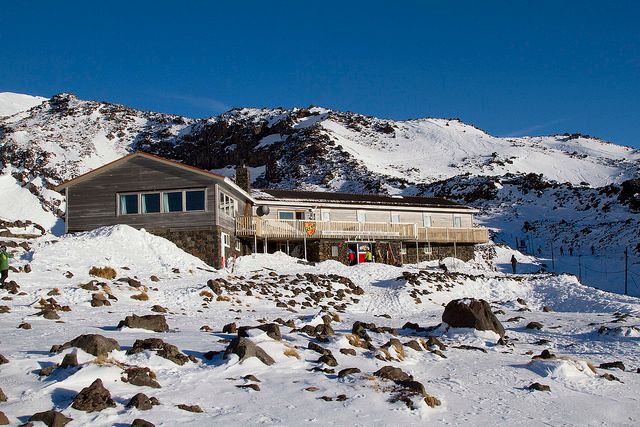Volcanoes in New Zealand
The active volcanoes of Mount Ruapehu, Taranaki and Ngauruhoe are cone or stratovolcanos 4ea753d7-22d2-4bfd-a4fc-74c56324d7ef whose characteristic shape is formed by the layering from successive eruptions.
Caldera volcanos ea4afdac-0208-4b44-82ca-34742d59faf8 are known by their enormous explosive eruptions that throw out so much material that the crater collapses. Examples of these include Taupo 2b78a8c0-8312-4cc9-ad70-c8fe65a52165 which is now partly filled by the 616 km² Lake Taupo, and Okataina/ Mount Tarawera. 827bcb9a-1a34-4fa2-938c-7100cd4faabb
Volcanic fields, such as Auckland and Northland, are where small eruptions occur over a wide geographic area, and over thousands of years.
Numerous types of hazards may result from a volcanic eruption, often simultaneously. In New Zealand, the eruption of Mount Tarawera b6c0f0b7-639b-47dc-8d73-beb8e33e2309 in 1886 killed over 110 people. Witnesses described earthquakes, lightning storms and fireballs, strong winds, suffocating gases, ash fall and darkness during daylight hours as the ash cloud passed overhead. The 1953 Tangiwai train disaster 7f7b45ee-488f-41e0-8cae-658dd34c9f33 resulted in 151 deaths, after a train plunged into a river when the bridge it was crossing collapsed as a result of the Mount Ruapehu crater rim failing, spilling a lahar of sand, ice, silt and boulders down the mountain into the nearest river valley.

-
http://www.teara.govt.nz/en/volcanoes/page-3
-
http://www.teara.govt.nz/en/volcanoes/page-4
-
http://www.gns.cri.nz/Home/Learning/Science-Topics/Volcanoes/New-Zealand-Volcanoes/Taupo-Volcano
-
http://www.gns.cri.nz/Home/Learning/Science-Topics/Volcanoes/New-Zealand-Volcanoes/Okataina-Volcanic-Centre-Mt-Tarawera-Volcano
-
http://www.teara.govt.nz/en/historic-volcanic-activity/page-2
-
http://www.teara.govt.nz/en/historic-volcanic-activity/page-5
Last updated at 11:13AM on February 8, 2018